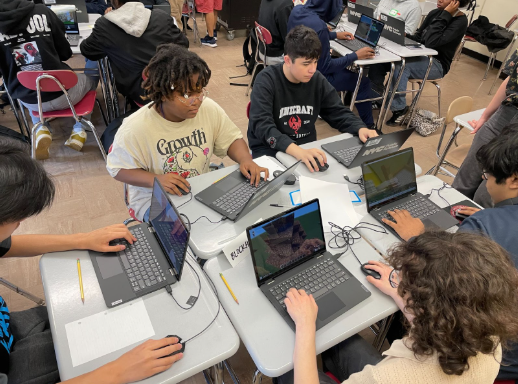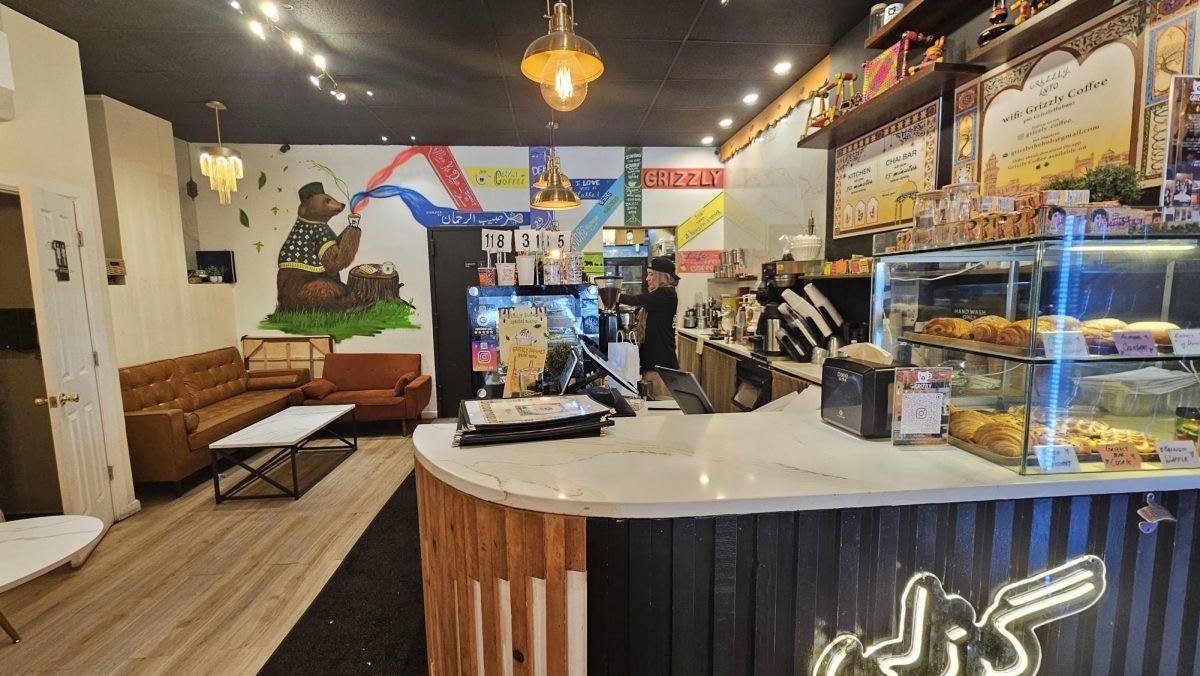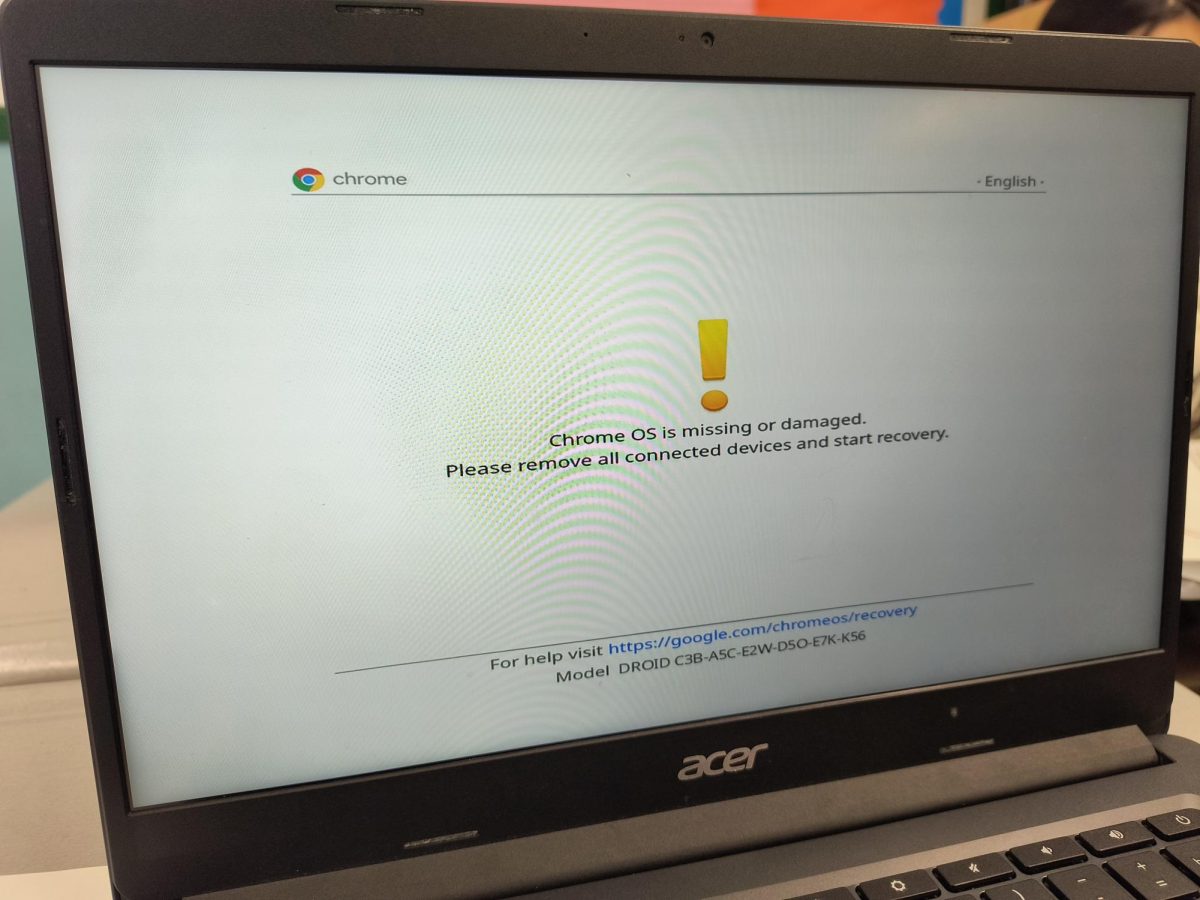Picture this: You walk into class, go to the Chromebook cart and take one out to start your work. You hold down the power button and are greeted by issues with the screen, or half of the keys missing, or a no connection screen barring you out of the device. There’s no sugarcoating it: The Chromebooks currently used in the school aren’t all too great, and most students can agree. They’re flimsy, incredibly lightweight, often missing keys, or may not start due to people forgetting to plug them in the other day, causing you to have to get up and grab a new one. There’s also the Chromebook’s massive dependency on an active internet connection for most commonplace features in regular laptops.
Chromebooks need to be online to do many things which would otherwise be trivial, such as logging in. This is a massive issue given the schools (often times) poor Wi-Fi quality. If the Wi-Fi goes out, or experiences any technical difficulties, students are left unable to complete any of their work, losing valuable learning time.”If you’re in a literature class and you’re going to read something, a book doesn’t need Wi-Fi” as AP of Data and Technology, Joseph Antonucci, says. “A book doesn’t need a log-in, it’s not going to crash.” This problem significantly worsens when it comes to SAT, PSAT and AP exams, having gone or preparing to go fully digital in the past year. “For AP exams especially, what if the Wi-Fi goes down on that day?” As Antonucci describes, “They only offer the AP exams on that day at that time… They give a late day, but what happens if there’s some technical issue on that late day? They stop giving them. That’s not fair to students.” Despite improvements to the Wi-Fi following this last school year, these concerns still remain to be prevalent with digital learning and exams, in the simple fact that everything comes to a crashing halt the moment the Wi-Fi starts acting up. This begs the question: Why has the school decided to adopt Chromebooks over traditional laptops and computers in these past few years?
Chromebooks aren’t exclusive to Dewey, they’re commonplace in nearly any public school under the Department of Education. There are several reasons why Chromebooks were adopted over other options, one of the biggest would be pricing. The Chromebooks currently in use only cost about ~$200 per device, which makes them a suitable candidate to purchase in bulk for schools on a tight budget. “Cost is always the issue, it’s always about budget” as Antonucci states. “They’re the cheapest things that can be more easily afforded depending on a school’s budget.” Another big part of their adoption is their speed. “The old laptops took 7 minutes to even load” as IT Specialist Moustafa Khalifa states, “which is valuable time that was wasted at the beginning of every period for teachers and students.” In contrast, Chromebooks take only seconds for students to boot and login, while also being fairly lightweight, and not requiring a lot of resources to run smoothly. Meaning that students are able to access their assignments in a mere fraction of the time. “Besides the ultra fast and simplified reset and recovery process” Khalifa says, “and it doesn’t require a lot of resources to run.”
Another factor in Chromebooks as the default is Google Classroom. Following the Covid-19 lockdown in 2020, the DOE has been gradually transitioning towards digital learning, with Google Classroom being at the forefront of it. Given that, it would make sense for ChromeOS, the Operating System used in Chromebooks, would work best with Google Classroom, as well as every other app in the Google ecosystem, such as Google Docs and Slide. There’s also how Google Drive’s integration with ChromeOS automatically adds projects and files directly to the students drive, allowing them to quickly and seamlessly access them between devices.
While Chromebooks aren’t always the best devices, they’re some of the only viable options that suit the DOE’s requirements. “Chromebooks are the only avenue for a school to provide technology into every classroom…” as Antonucci states “not saying it’s the correct decision, but it’s our only choice.” Students need devices for their daily assignments, and Chromebooks are the only reasonable option that’s currently on the market, and within the budgetary constraints of the DOE. “Education is in transition right now, and really moving heavily more towards usage of technology in classrooms…“ Antonucci says “This is what we are tasked with, as a school, from the New York City Department of Education. We have to do our best to do it with what we’ve got. It’s not an easy task, because of the technology… When the technology works, it’s great! But if it doesn’t work, you know.”
The DOE doesn’t seem to have any plans to move away from Chromebooks as the standard for school devices, given their cheap price, fast speeds, and integration with Google Classroom and Google Drive. While it’s likely that Chromebooks in public schools are here to stay, chances are, at least hardware-wise, the Chromebooks will be replaced with newer updated models in the future, depending on the budget and necessity for replacement.















